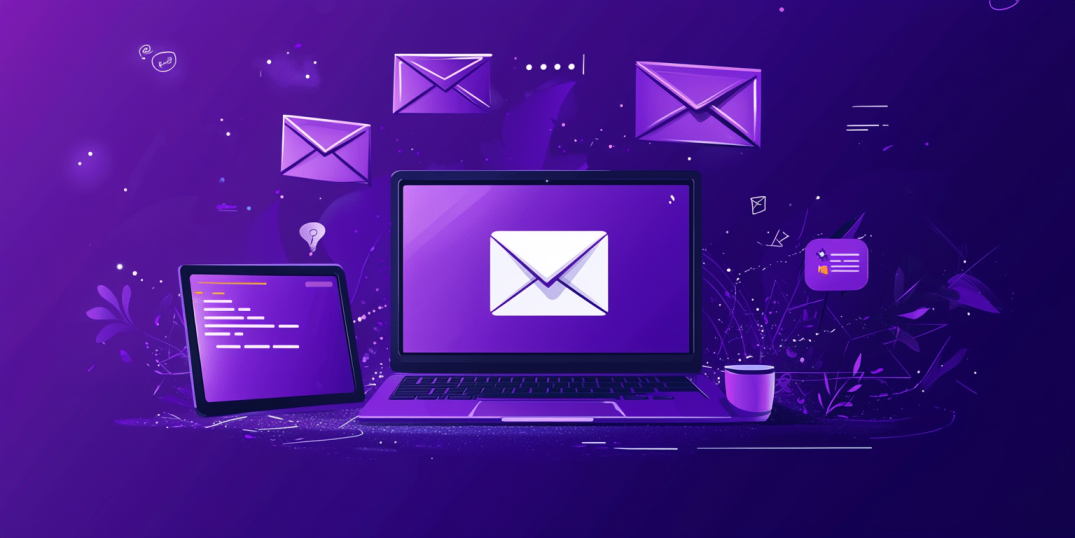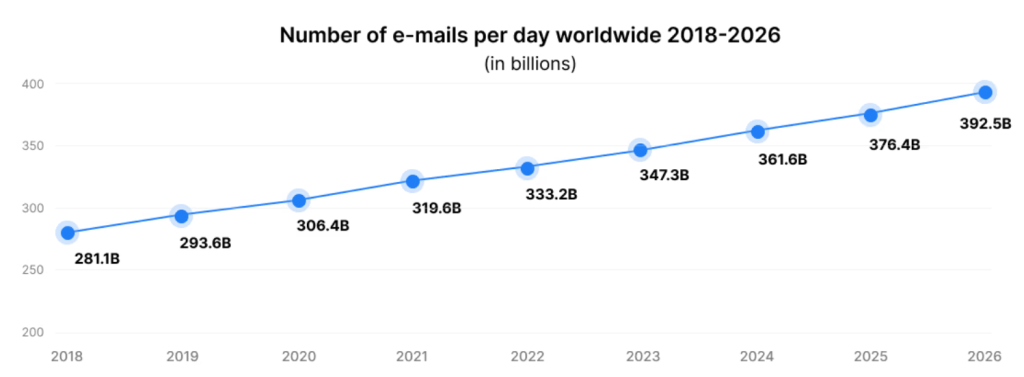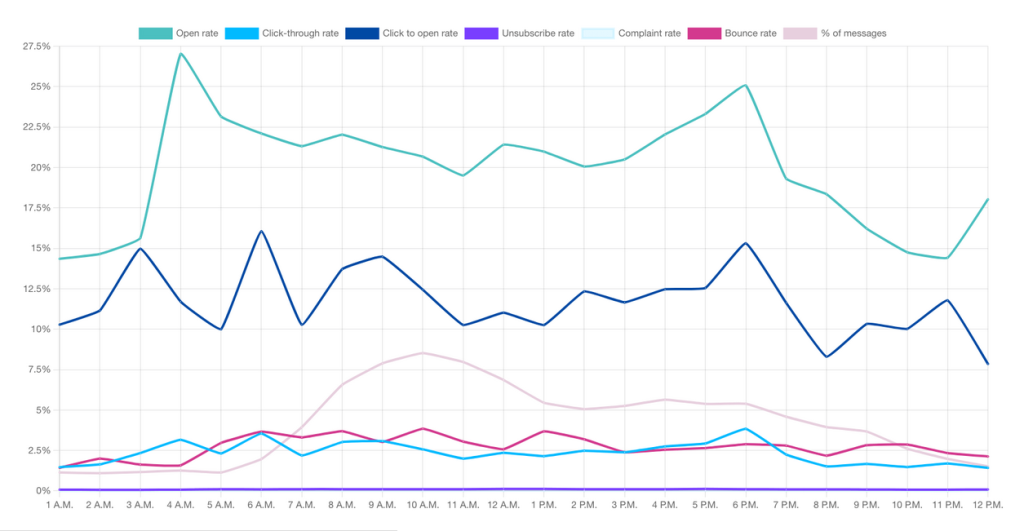- Home
- Email Tips and Tricks
- 11 Email Marketing Optimizatio ...

Two things have really gone up for email marketing lately: competition and expectations. The bar for engagement keeps climbing—and so does the pressure to perform. There are just too many emails in people’s inboxes. All of them offering something, trying to have better copy, better design, more original subject lines. That’s why you either try your best to compete, or you don’t—and then most likely, your emails won’t survive the competition.
Then there are expectations. With so many offers coming in from all kinds of brands, people just don’t accept anything that feels off. If your email is a bit sloppy, too generic, or just doesn’t look like it’s been made with care—people aren’t going to waste their time on it. Their standards are high now.
That’s why ongoing email marketing optimization is what you need to do to stay competitive. So, how to improve email marketing campaigns in a way that works not just for performance, but for actual people? That’s exactly what we’ll talk about in this article.
1. Write Subject Lines That Make People Curious
Subject lines are just five to ten words, but their impact can vary from “Wow, that sounds cool, I’d like to read it” to “Nah, sounds like another annoying promo.” The difference here is that some subject lines pique curiosity, while others don’t. Because subject lines that tease you with the beginning of a story, pose a question, or just slightly feel out of the ordinary—even if it’s weird ordinary—tend to earn more attention.
So, it might sound a bit complicated, but the good news is—you don’t have to guess the whole thing yourself. When you have that initial creative spark, one of the simplest email optimization techniques is to A/B test your subject lines. Make up the subject line you like, and then try different emotional tones, different lengths, throw in an emoji or two and see what happens. In email campaign optimization, even tiny tweaks can lead to big shifts in open rates.

2. Stop Sending Everyone the Same Email
Unless your audience is made up of identical triplets who all think, shop, and click the same way, don’t send the same content to everyone.
The earlier you accept that email marketing optimization starts with understanding that people are different, the faster things start to improve. Some people are new to your world. Some are loyal regulars. Some only show up when there’s a discount. So, it only makes sense that they all need different email content too.
So, if you want to optimize email marketing for real results, start segmenting. Even a few basic splits, like separating new subscribers from returning ones or breaking things down by interest or click behavior, can make a huge difference.
3. Use Personalization That Feels Human
Personalization has become both more advanced and more invisible at the same time. And in a time when people are feeling increasingly disconnected and hyper-targeted, getting an email that feels warm and human goes a long way.
What makes a good email isn’t that it has someone’s name on it, but what it has in it about the person receiving it. And that does not mean that you have to dig very deep—actually, too much personalization can feel creepy. Instead, you can reference someone’s preferences based on what they’ve clicked on or purchased before. Or adjust the vibe of your campaign depending on the stage of their customer journey. Middle ground is what you shall aim for with your email marketing optimization.

4. Make Sure Your Emails Look Great on a Phone
While mobile-friendly emails sound obvious, many of them are still not. But most people are reading your content on their phone, holding it with one hand while doing something else. So, if your email isn’t mobile-friendly, it’s just not friendly at all.
There are a few basic rules for mobile email optimization that might sound trivial, but they work:
🟣 Keep your layout simple. One column is safer than two.
🟣 Use large enough fonts (14–16 px for body text, please).
🟣 Make buttons big enough to tap with a thumb—not a pinky toe.
🟣 Leave enough spacing so everything feels breathable and scrollable.
And if all of that sounds like too much effort, you can use pre-designed, mobile-optimized email templates. Platforms like Sendigram have already baked these best practices into their layouts.
5. Send Emails When Your Audience Is Most Likely to Act
While there are generalized “best sending times,” they can vary a lot depending on the industry or culture. They also depend on your audience, their habits, time zones, and lives.
So instead of guessing, just look at your data. If your platform gives you optimal send time tools—use them. If not, start testing. Try mornings. Try afternoons. Try different days of the week and see what works.
Also, pay attention to how people interact with your emails. When do they open, and how quickly? That kind of feedback—even if it’s just patterns you notice over time—can help you fine-tune your timing and make future sends feel more in sync with real people’s rhythms.
Best time to send an email campaign

6. Clean Up Your Email List Before It Hurts You
While it’s tempting to keep your list as big as possible, this is one of those cases where quality over quantity always wins. When you have a list full of contacts who never open your emails—or worse, mark them as spam—that quantity doesn’t help you. In reality, it does the opposite—it drags down your open rates, your deliverability, and your overall sender reputation.
So don’t be afraid to cut what’s not working. Remove the ones that haven’t opened in months. Segment the ones that are in the “maybe” zone and give them a chance to re-engage—if they don’t, don’t hesitate to say goodbye.
7. Automate the Stuff That Work
If you’ve already been overwhelmed by the amount of work you need to do for your email campaign to work, here’s the good news. Not everything in email needs to be written from scratch every time. In fact, it shouldn’t. Because some emails, like welcome flows or abandoned cart reminders, can and should be automated. You can write them once, and then they keep on working in the background without you needing to interfere or do more work. And that’s probably the easiest part of email optimization — it saves a lot of your time while keeping track of every important interaction for you.
8. Don’t Hide Your Call to Action—Make It Unmissable
When it comes to CTAs, you can still find email campaigns that are stuffed with way too many, others missing them completely, and everything in between. And neither of these approaches needs to be treated like a mantra.
Your CTAs should make sense for your particular campaign. If your content and layout are structured in a way where three different CTAs make sense—that’s perfectly fine. If it only calls for one, then just use one. The real no-go here is about placing your CTA where no one can see it, making it too small or overly flashy.
Email campaign examples: 1 CTA vs 3 CTAs
Source: Really Good Emails
9. Measure What Matters, Not What Looks Good on a Dashboard
With the use of contemporary email marketing platforms, marketers now have the opportunity to measure pretty much everything—CTRs, CTORs, engagement rates, bounce rates, you name it. While it gets tempting to want to know it all, that should not be the goal. What matters is being able to see the bigger picture (because some indicators only make sense in connection to others) and focusing on what matters in your particular case.
For example, if your email has a high open rate but doesn’t convert, then it’s probably not the success you need. So, before getting deep into dashboards, define your goal. Then track the metrics that are relevant to that goal. This way, you’ll be spending your energy on what really matters.
10. Keep Your Emails Out of the Spam Folder
Writing good subject lines, removing inactive subscribers, and avoiding suspicious links are no doubt important steps in keeping your emails out of the spam folder. But there’s another layer to email deliverability that’s just as critical—and it’s more technical. It’s domain authentication.
If your SPF, DKIM, and DMARC settings aren’t properly configured, even your best-crafted campaigns can end up in spam. Inbox providers like Gmail and Outlook assess your credibility based on many parameters, and authentication protocols are among those that have primary importance.
11. Keep Testing—Even If It’s Just One Thing at a Time
Sometimes the idea of testing can feel like a separate job. Subject lines, colors, buttons, layouts, send times—there’s always something you could be testing, and that alone can feel overwhelming. But it does not have to be.
Even if you’re only testing one small thing at a time—like changing the headline or the order of your content—it still counts. Email marketing optimization isn’t always about one big change but about making smart, small decisions over time that help you learn what works. So, test what you can, when you can—good habits add up and bring positive changes with them.
Email Campaign Optimization Checklist
- Is your subject line interesting enough to make someone stop and click?
Not just catchy—does it spark curiosity? - Are you still sending the same email to everyone?
If yes, it’s time to rethink your segmentation. - Does your email feel like it was written by a real person for a real person?
Because personalization is more than just using someone’s name. - Have you checked how your email looks (and feels) on a phone?
Because mobile-unfriendly = ignored. - Are you sending emails when your audience is actually likely to open and act?
Don’t guess—test and observe. - Have you cleaned your list recently?
Inactive contacts can hurt your deliverability and reputation. - Are you automating the emails that don’t need to be sent manually?
Think welcome flows, cart reminders, and other repeatable wins. - Can your CTA be missed—or does it feel like a natural next step?
Make it visible, clear, and worth clicking. - Are you tracking metrics that actually show impact—not just vanity numbers?
Look at what drives action, not what just looks good. - Have you set up the tech basics to stay out of the spam folder?
SPF, DKIM, DMARC, and clean links matter more than you think. - Are you testing things regularly—even if it’s just one little tweak at a time?
Small changes add up fast.
To Sum Up
In this article, we’ve looked at 11 techniques that can help you optimize your email marketing. And yes, that might sound like a lot. It may even feel overwhelming. But the truth is, some things only need to be set up once and left to run. Some need ongoing testing and adjusting, while others simply need your personal touch.
When you practice these things regularly, they won’t feel so hard anymore. Put together, they’ll start forming one solid, well-shaped email marketing strategy. That’s the moment when your efforts start to pay off—slowly at first, but steadily and for real.



